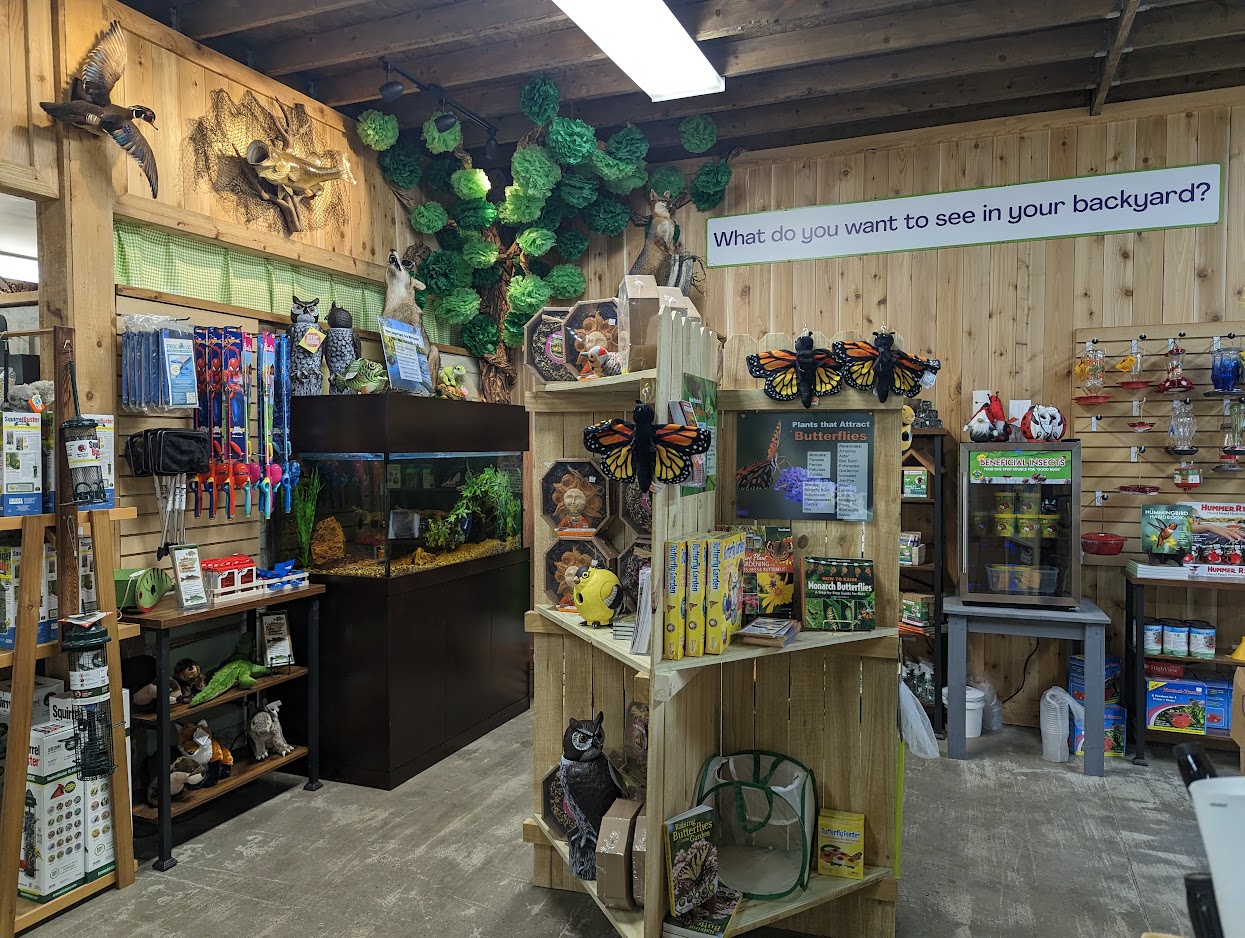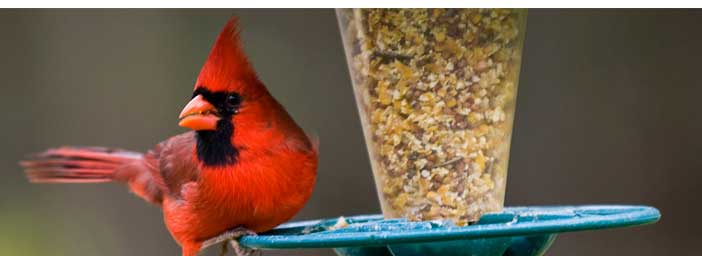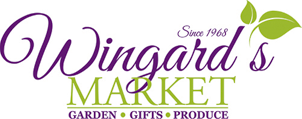Backyard Nature Center


Backyard Nature Center - Located in the Fresh Produce Market
Wingard’s Market has stocked its shelves with an array of items to turn your backyard into a habitat for birds and wildlife: shelters, feeders, seeds, accessories, observational tools and other items to help you enjoy the wildlife in your backyard.
Continuing in the footsteps of his Grandfather, Judson Wingard, and his love for nature, Zach Steinhauser is putting his degree in Wildlife Ecology and Conservation from the University of Florida to work, as he heads up Wingard’s Market’s newest department. Zach and the staff of Wingard’s Market hope to add another dimension to creating a beautiful backyard living space with the addition of Backyard Nature Center. By providing the best bird seed from Cole’s, of Kennesaw, GA, as well as other high quality products, and encouraging local bird conservation, customers can expand their knowledge and ability to enjoy nature right at home!
Fall in love with your backyard! – Start your journey here…
In order to create a wildlife habitat in your backyard, there are 4 things that every habitat needs and those are Food, Water, Cover, and Space to Raise Young.
Food: There are various ways to provide food for wildlife in your backyard. Generally, natural food sources of Seeds, Berries, Fruits, Nectar, Nuts, Pollen, Leaves, Twigs, and Sap provide approximately 80% of wildlife’s diet. Humans can provide the additional 20% through various types of Bird Feeders, Squirrel Feeders, Hummingbird Feeders, etc.
Cover: All wildlife need places to hide or call home. The natural world can be very severe in your backyard wildlife. Many animals need places to hide from the extreme heat of the hot summer or the freezing chill of the cold winter, as well as places to hide from would-be predators. Many predators, too, need cover in order to hunt their prey. Natural sources of cover include trees (live or dead), shrubs, thickets, brush or rock piles, and evergreens, while people can provide roosting boxes and plant more native plants for cover and create brush or rock piles, etc.
Water: Food alone is not sufficient to attract and retain wildlife to your yard. A habitat needs water in order for wildlife to remain. Natural sources of water include lakes, ponds, puddles, rivers, and creeks, while you can establish artificial water sources such as birdbaths, fountains, and Koi or regular ponds. Wildlife will first be attracted to the water source and then begin to look for food sources.
Space to Raise Young: Every wildlife habitat can support a fixed amount of wildlife. To have them persist in your yard and community, they require space to raise their young, such as cover plants or nesting or roosting boxes; a homeade pond can also keep them in your yard.
Feeders, Boxes, Plants & Pets
There is surprisingly a lot more to bringing birds to your backyard feeder that you’d think.
Some like to feed on the ground, some like to feed off the ground, some like insects, some like a special sort of seed, etc. Here are some helpful tips to bring as many birds to your feeders as possible.
Elevated Feeders: Some birds like the Tufted Titmouse, Red-bellied Woodpecker, and Brown-headed Nuthatch like to feed on food sources they can find in the trees. People can mimic this behavior by installing Tube Feeders, Hopper Feeders, or Suet Feeders.
Suet Feeders: Suet is a formulation of animal fat and other ingredients, like insects, to attract birds and provide a food source high in energy. Birds like Woodpeckers, Warblers, Chickadees, Titmice, Nuthatches, and Wrens all incorporate suet into their diets. We have various types of suet here at Wingard’s Market that cater to different birds and their requirements.
Ground Feeders: While some species of birds feed exclusively in the trees, there are some that venture to the ground to feed. Birds like Cardinals, Mourning Doves, various Sparrows, and even Ducks will come to Ground feeder trays or platform feeders that are set on the ground in a place close to cover if it’s needed.
Insect Feeders: Some birds will feed primarily on insects and worms, like Eastern Bluebirds. To attract them, place hanging tray feeders full of mealworms, which provide a high source of energy and protein.


Nest Boxes
Different birds require different types of nesting boxes. To have them successfully nest in the boxes you set out, each different type of box should include:
- A sloped roof
- Drainage holes
- Ventilation holes
- Make sure it’s easy to clean out
- A fledgling (baby birds) ladder (A scored area inside the box below the hole, so fledglings can disperse)
- Install a predator baffle to keep predators out of your box
Native Plants
Native plants, those that occur naturally in a landscape and are native to a particular area, also help in attracting wildlife. Wildlife prefer to feed, nest, and seek shelter in native plants than many plants we use to make our yards look nice. Below is a link to South Carolina Wildlife Federation’s list of native plant species that you can plant in your yard.” Click here to see a list of plants that are native to South Carolina.
Pets
If you are a pet owner this could potentially affect the wildlife and how they behave in your yard. Dogs and Cats kill BILLIONS of wildlife every year.

